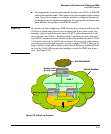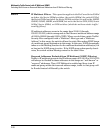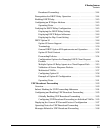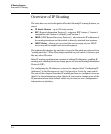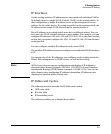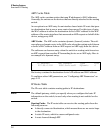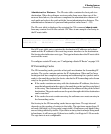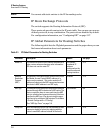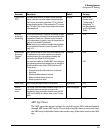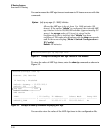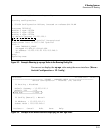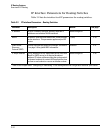
IP Routing Features
Overview of IP Routing
IP Interfaces
On the routing switches, IP addresses are associated with individual VLANs.
By default, there is a single VLAN (Default_VLAN) on the routing switch. In
that configuration, a single IP address serves as the management access
address for the entire device. If routing is enabled on the routing switch, the
IP address on the single VLAN also acts as the routing interface.
Each IP address on a routing switch must be in a different subnet. You can
have only one VLAN interface that is in a given subnet. For example, you can
configure IP addresses 192.168.1.1/24 and 192.168.2.1/24 on the same routing
switch, but you cannot configure 192.168.1.1/24 and 192.168.1.2/24 on the same
routing switch.
You can configure multiple IP addresses on the same VLAN.
The number of IP addresses you can configure on an individual VLAN interface
is 32.
You can use any of the IP addresses you configure on the routing switch for
Telnet, Web management, or SNMP access, as well as for routing.
Note All ProCurve devices support configuration and display of IP address in
classical subnet format (example: 192.168.1.1 255.255.255.0) and Classless
Interdomain Routing (CIDR) format (example: 192.168.1.1/24). You can use
either format when configuring IP address information. IP addresses are
displayed in classical subnet format only.
IP Tables and Caches
The following sections describe the IP tables and caches:
■ ARP cache table
■ IP route table
■ IP forwarding cache
The software enables you to display these tables.
3-5



